Hay-on-Wye (Y Gelli), Powys, Wales
Around Hay-on-Wye
Photos and report by Mike Slocombe, May 2006
The Welsh town of Hay-on-Wye lies on the national boundary with England with the county boundaries of Brecknockshire and Radnorshire running through the town.
Bizarrely, the county boundary is marked by the unmissable River Wye, while the national boundary follows the trickling Dulas Brook which meanders along a small valley past Cusop Dingle.
Not surprisingly, such an important strategic location has attracted more than its fair share of invading hordes, with the castle seeing a ton of action from both sides of the border.
The English King John burnt it down in 1216, and so did the Welsh Prince Llewellyn not long after.
With its location on the road to Brecon - once the most important town for miles around - Hay has a long history of providing
food and lodging to travellers with coaching inns and pubs.
More recently, Hay has become famous for its connections with literature.
Hay's association with books started when Richard Booth, an Oxford graduate, opened his first bookshop in 1961 and pursued his dream that a town full of bookshops could be an international attraction.
Not averse to the odd stunt on the way - in 1977 he declared independence for Hay-on-Wye, crowned himself as King and made his horse prime minister.
Hay-on-Wye is now stuffed full of bookstores with its internationally recognised literature festival attracting half a million visitors each year.
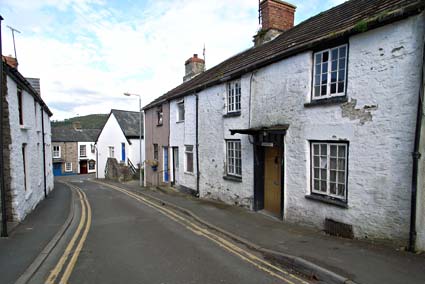
The attractive streets of Hay.
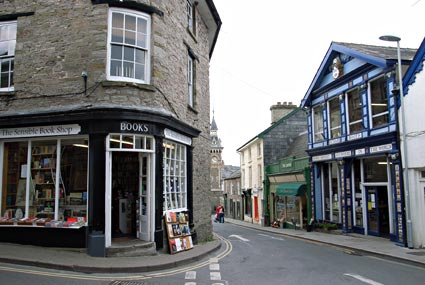
Richard Booth's bookstore "Europe's Largest Secondhand Bookshop" can be seen on the right in a distinctive two-tone blue finish.
Despite a population of some 1,300 people, hay on Wye boasts around forty-one bookshops at the last count.
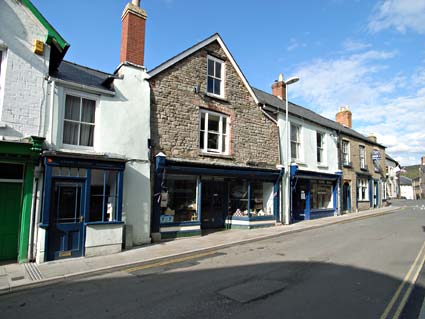
From left to right, Hay Wholefoods and Delicatessen, The Cutting Room hairdresser and Addymans Books.

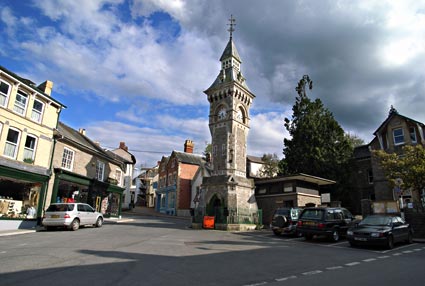
Built in the 1880s, Hay's clock tower is a solid example of 'High Victorian Gothic' style.
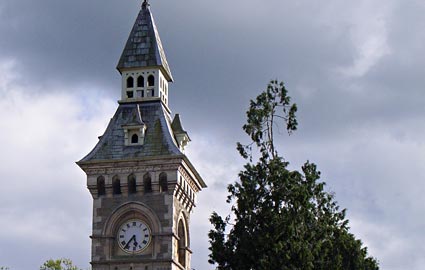
Clock tower detail.
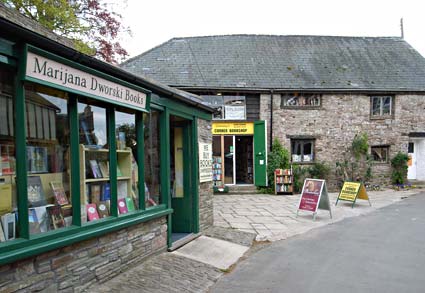
A view along the alley curiously known as the 'Backfold.'
Closest to the camera is the Marijana Dworski Bookstore, which specialises in languages, with Greenway's corner bookshop behind.
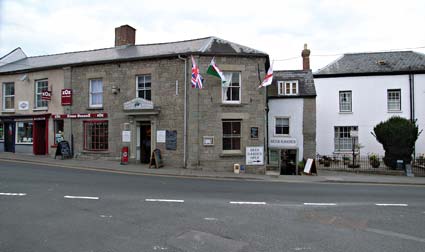
The Wine Vaults in Hay. We liked it here!

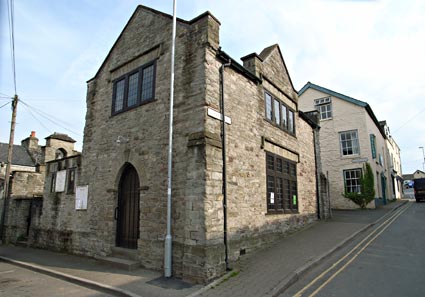
Striking building on St. John's Place.
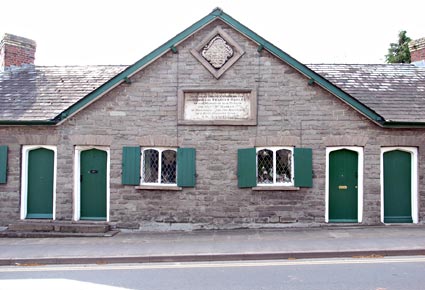
Hay-on-Wye almshouses, built in 1832.
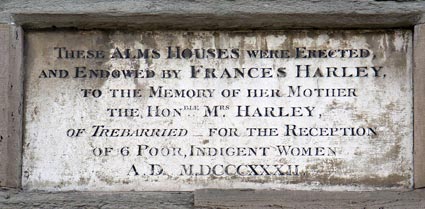
Close up of the stone carving on the froint of the almshouses.
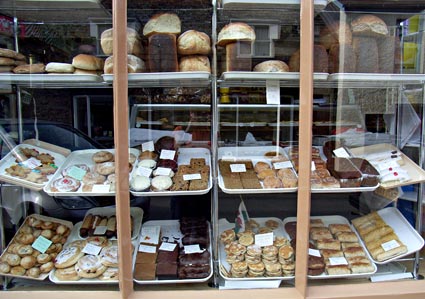
A window of lovely cakes! I grabbed a quick Welsh cake snack.
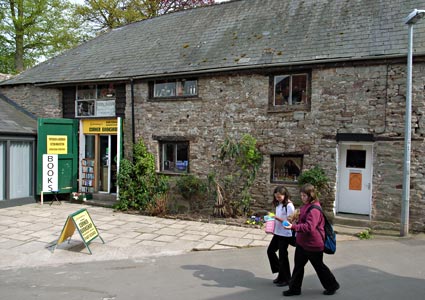
Another view of Backfold, on the approach to the castle.

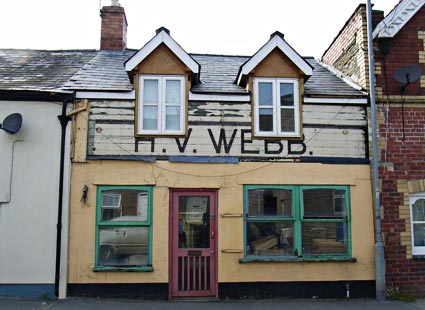
Curious looking house, close to the old Three Tuns pub.
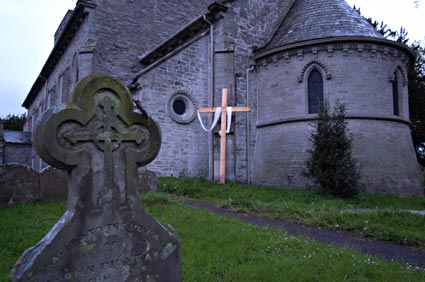
The original 12th century church had fallen into such disrepair that it was described as 'dark comfortless and ill-contrived and quite inadequate in point of size' in 1828.
In 1834, St. Mary's Church was almost entirely rebuilt by Edward Haycock in 1834 with only the lower stages of the original 12th century West tower remaining.
When we went past at dusk, a rather spooky wooden cross was propped up against the wall.
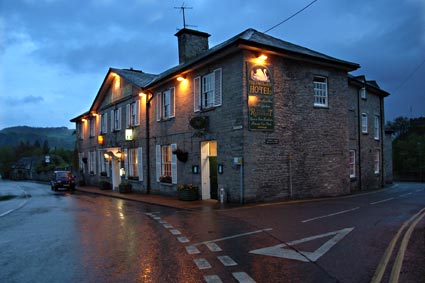
Once the town's principal coaching inn, the current Swan at Hay Hotel was erected in 1821 and now serves as a 3-star hotel.

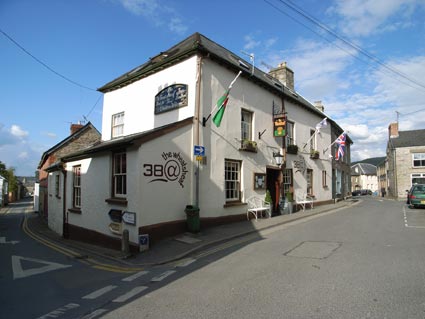
By far the liveliest pub in town, the Wheatsheaf Inn (sorry, make that '38@ The Wheatsheaf') attracts an up-for-it crowd who like to give it large on a Friday night. And why not?!
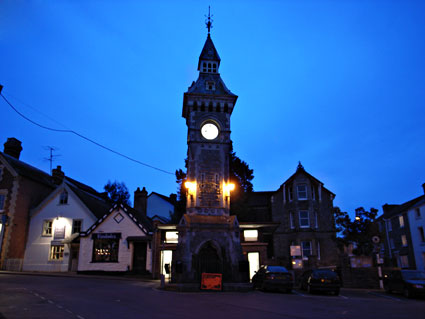
Clock tower at night.
|
|

